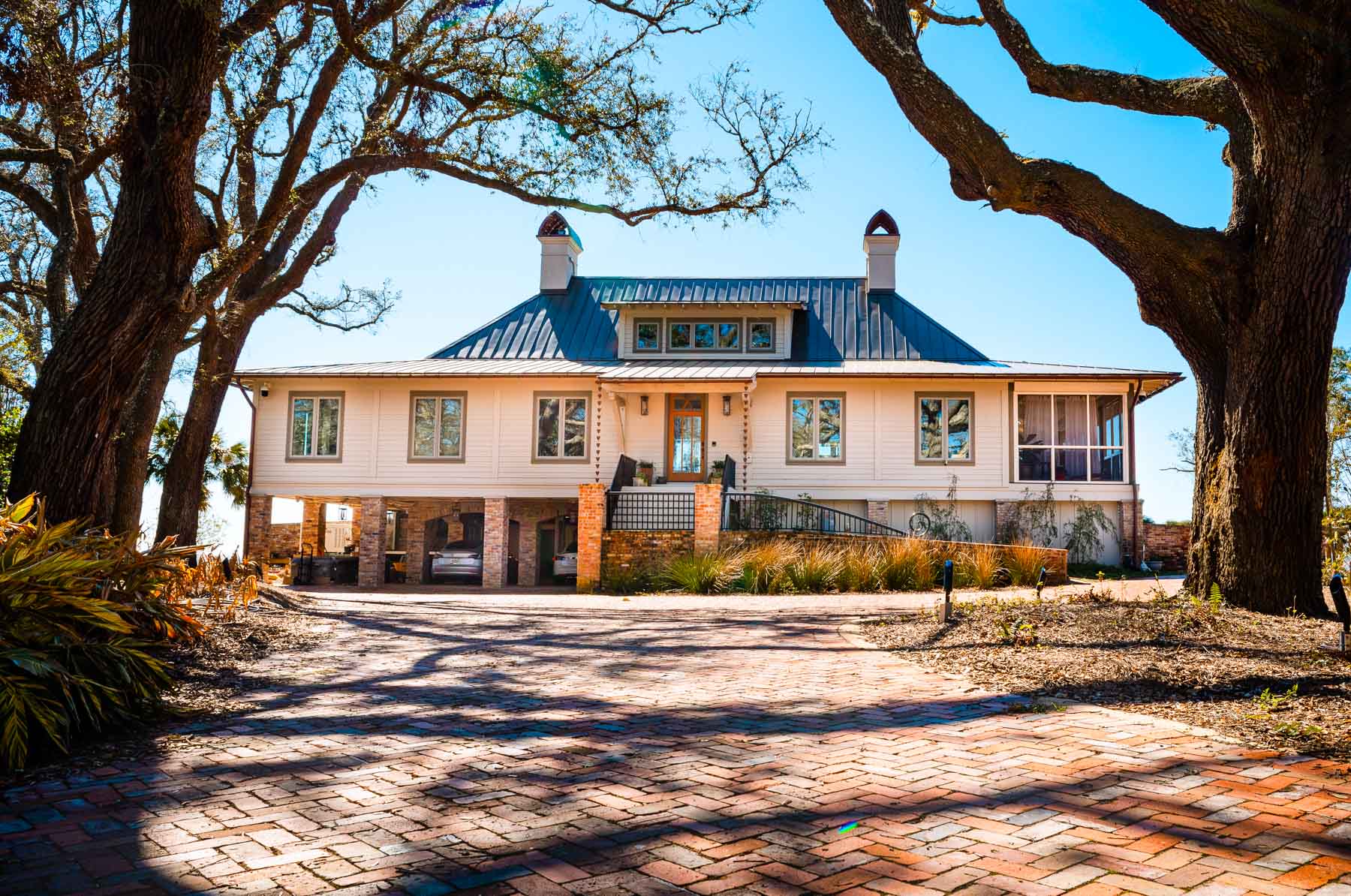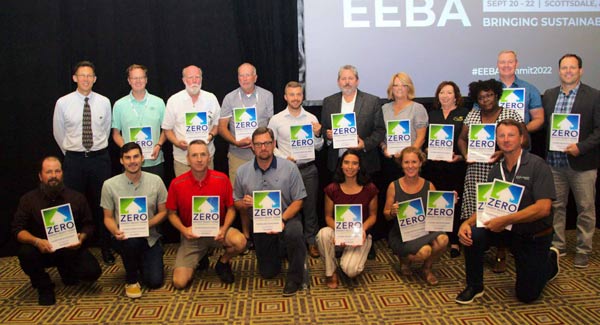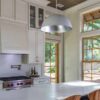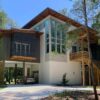A Helpful Guide to Net Zero and Net Positive Homes
Did you know that the energy used to build and operate buildings counts for nearly 40% of carbon emissions in the United States? With climate change on the rise, many in the AEC (Architecture, Engineering, and Construction) industries are looking to change that. One strategy to mitigate the effects of climate change from the built environment is the design of zero energy, or net zero, buildings.
What are Net Zero Homes?
Net zero energy homes and buildings are defined as structures that, on an annual basis, produce as much renewable energy as they draw from outside sources. Net Positive buildings actually produce more energy than they consume over the course of one year.
Achieving net zero for your building has never been more available and attainable. While still higher than regular “to-code” homes, the up-front costs for a zero energy building have dropped considerably over the past few years, and the initial investments are offset quickly with reduced energy bills. Homeowners can also deduct as much as a quarter of the cost of renewable energy sources such as solar panels from their taxes, at least for the foreseeable future.
How do you achieve Net Zero or Net Positive?
The design of zero energy buildings involves much more than just solar panels. Energy production is expensive, so our approach to zero energy buildings starts with energy conservation. Each building is carefully oriented to take advantage of natural resources like breezes, sunlight, and shade. Existing buildings must be adapted to their specific sites to capture daylight but avoid overheating.
Additionally, zero energy buildings are designed to have an extremely efficient building envelope, with optimized insulation, windows, and exterior materials that further minimize energy loss. The design also includes right-sized, efficient HVAC and water heating systems. Frequently, the efficiencies of the building envelope allow for much smaller systems than in a conventional building. After addressing site, envelope, and systems optimization with a goal of reducing energy demand by roughly 50%, renewable energy production becomes much more cost effective and attainable.
Zero Energy Ready Homes (ZERH)
A Zero Energy Ready Home (ZERH) can give you many of the great benefits of a net zero building with less expensive start-up costs. These homes are built to the same rigorous efficiency standards as zero energy buildings, but with one key difference: they are designed and wired to become truly ‘zero energy’ at some point in the future rather than right away.
This allows owners to purchase or build a high-efficiency home that has a straightforward path to net-zero energy when they are ready. As the U.S. Green Building Council states, “being ready for renewables and designed with major energy efficiency in mind can make it easy for homeowners and multifamily building owners to get their buildings to zero energy in the future without expensive renovations or adjustments.”
The US Department of Energy has developed the Zero Energy Ready Certification Program to guarantee that zero energy ready homes meet rigorous requirements that ensure energy efficiency, comfort, health and durability. These high-performance homes and buildings are a true symbol of excellence, offering unparalleled advantages that allow them to last longer and work better than traditional homes.
As the Zero Energy Project explains, each of the key components that make up a Zero Energy Ready Home has a compelling value for home buyers:
- Optimized Thermal Protection meets and exceeds the next generation code making each home Future Ready
- Whole-House Water Protection effectively manages potential leak and mold problems making each home Moisture Ready
- High-Performance Heating and Cooling ensure both energy efficient equipment and professional installation making each home Comfort Ready
- High-Efficiency Components typically come with improved performance, quality, and durability making each home Tech Ready
- Comprehensive Indoor Air Quality includes all the requirements of the U.S. Environmental Protection Agency Indoor airPLUS program making each home Health Ready
- Solar Ready Construction minimizes the cost and disruption of adding solar in the future making each home Zero Ready.
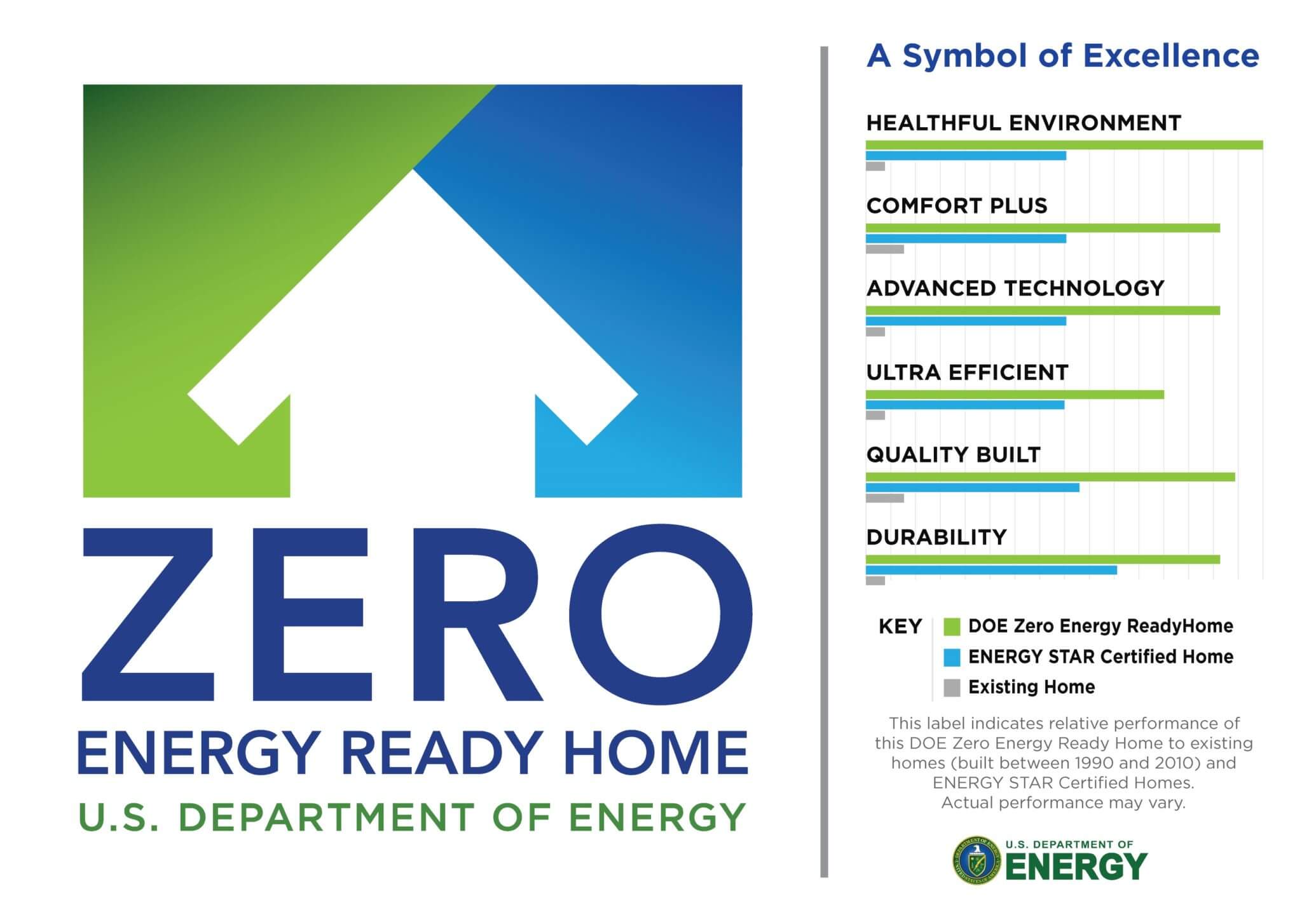
What makes a home Zero Energy Ready?
HEALTHFUL ENVIRONMENT
Every DOE Zero Ready Home has a comprehensive package of measures to minimize dangerous pollutants, provide continuous fresh air, and effectively filter the air you breathe.
COMFORT PLUS
Superior insulation, windows, air sealing and space conditioning systems included in every DOE ZeroEnergy Ready Home surround you with even temperatures, low-humidity, and quiet in every room on every floor.
ADVANCED TECHNOLOGY
Every DOE Zero Energy Ready Home begins with solid building science specified by Energy Star for Homes, and then adds advanced technologies and practices from DOE’s world-class research program, Building America.
ULTRA EFFICIENT
Compared to a typical home, an ultra efficient Zero Energy Ready Home is inexpensive to own. In fact, every DOE Zero Energy Ready Home is so energy efficient, a small solar electric system can easily offset most, or all, of your annual energy consumption. We call this Zero Net Energy Ready.
QUALITY BUILT
Advanced construction practices and technologies are specified for every DOE Zero Energy Ready Home. Then they are enforced by independent verifiers with detailed checklists and prescribed diagnostics.
DURABILITY
The advanced levels of energy savings, comfort, health, durability, quality and future performance in every DOE Zero Energy Ready Home provide value that will stand the test of time, and will meet and exceed forthcoming code requirements.

